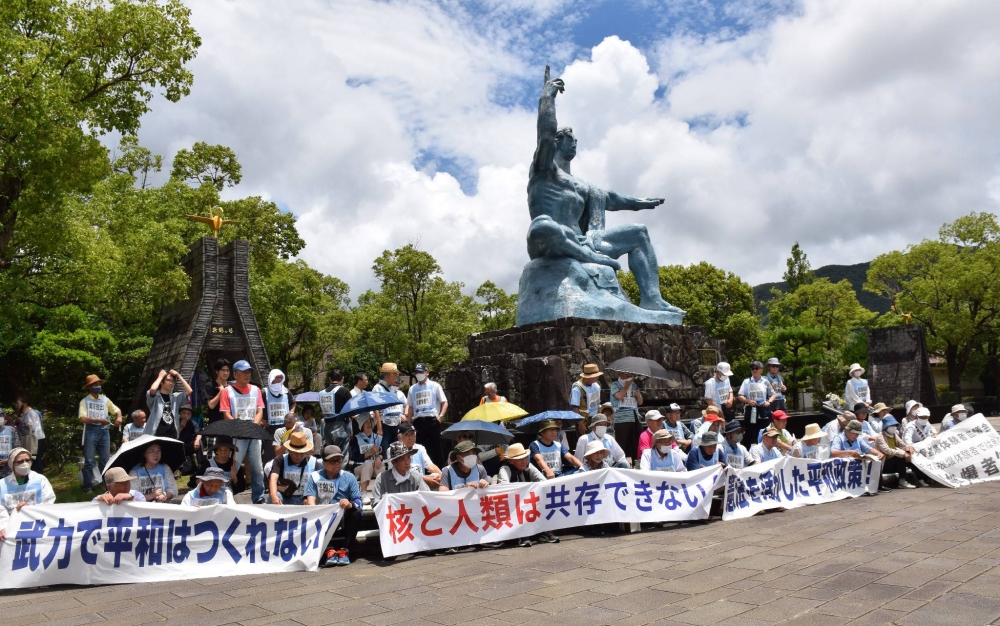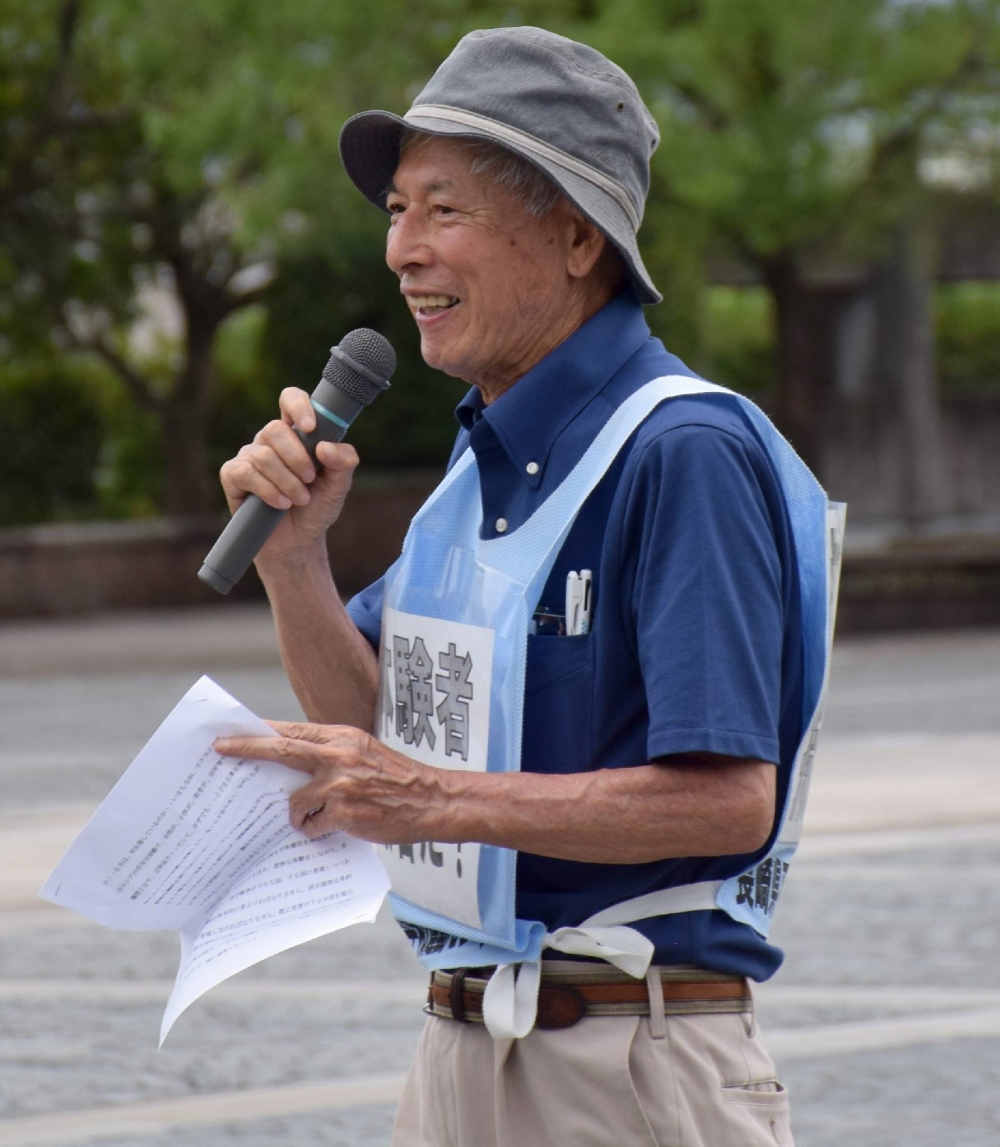Nagasaki's anti-nuclear sit-in campaign has surpassed its 500th rally, as aging survivors of the atomic bombing and younger generations renew their commitment to abolishing nuclear weapons.
Held monthly at Nagasaki Peace Park, except during August when the peace memorial ceremony takes place, the sit-ins have become a symbol of unwavering determination.
“Our next goal is, of course, to reach 1,000 rallies,” said Koichi Kawano, 84, a survivor and chairman of the Nagasaki Prefecture peace movement center’s hibakusha liaison council.
The movement began in March 1979, sparked by protests against the entry of the nuclear-powered ship Mutsu into a port in Sasebo, Nagasaki Prefecture. Initially held on the 16th of each month, the sit-in shifted to the 9th, the date of the Nagasaki bombing, from September 1982, symbolizing opposition to nuclear weapons.
The 500th rally was marked on June 9 of this year.
At the 501st sit-in on July 9, Kawano emphasized the importance of the Treaty on the Prohibition of Nuclear Weapons, calling Japan’s failure to join the treaty “a national disgrace” for the world's only atomic-bombed nation.
“Let’s raise our voices together,” he urged the crowd.
With the average age of atomic bomb survivors now exceeding 85, the participation of younger generations is becoming more critical. Shinnosuke Osawa, 21, a junior at Chinzei Gakuin University in the prefecture, has been attending the sit-ins since his first year of high school. He expressed a deep sense of urgency as older activists age and pass away.
“We, the younger generation, have a responsibility to carry this on,” he said.





















With your current subscription plan you can comment on stories. However, before writing your first comment, please create a display name in the Profile section of your subscriber account page.